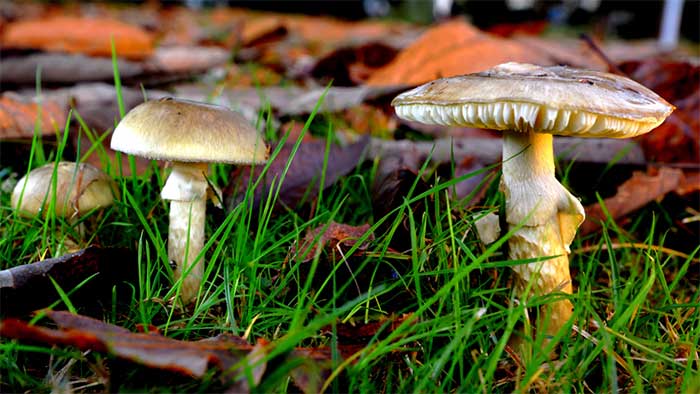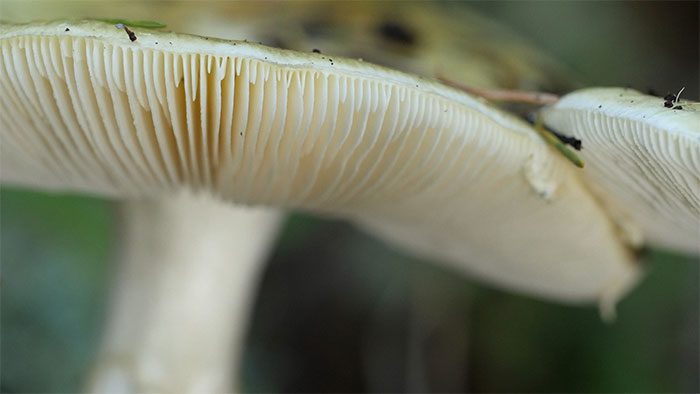The deadly mushroom species known as the Death Cap is rapidly spreading across North America. The reasons behind its spread have puzzled scientists.
Scientifically named Amanita phalloides, the Death Cap accounts for 90% of annual mushroom-related fatalities, making it the most dangerous mushroom in the world, according to National Geographic.
Amanita phalloides, the species linked to the highest mortality rates, is often mistaken for the edible straw mushroom, according to the U.S. National Library of Medicine (NLM).
This mushroom originated in the United Kingdom and parts of Ireland, but over the past century, it has spread to Australia and North America.
Since its arrival on the West Coast of the United States, this invasive fungus has rapidly proliferated throughout California and has even been found as far north as British Columbia, Canada. However, the primary reasons for the emergence of the Death Cap remain a mystery.

The Death Cap mushroom contains cell-destroying toxins. (Photo: ST).
Why the mushroom spreads so quickly, precisely when it appeared, and how it impacts the environment in which it grows are topics currently under investigation.
Here’s what you need to know about this lethal mushroom and how to identify it.
The Cell-Destroying Toxins of the Death Cap
The Death Cap can grow taller than 15 cm, with a dome-shaped cap of similar size. Its cap can sometimes be yellow or green, while the underside is white, and its stem is pale white—features that make it difficult to distinguish from edible mushrooms.
However, unlike edible mushrooms, the Death Cap can cause severe damage to the liver and kidneys, and in some cases, it can be fatal.
This is because the Death Cap contains a special type of toxin, says Milton Drott, a plant pathology researcher at the U.S. Department of Agriculture.
While safe to touch, the Death Cap contains Amatoxin—a substance that prevents cells from producing proteins, ultimately leading to cell death and organ failure (acute liver failure). Amatoxin is quickly eliminated from the blood as it is rapidly absorbed into cells.
Amatoxin is heat-stable and therefore not destroyed by cooking; it is also not destroyed by freezing or freeze-drying. Amatoxin remains toxic even after extended storage.
The Amatoxin targets the liver and inhibits transcription (the process of synthesizing RNA from a DNA template) from deoxyribonucleic acid to ribonucleic acid and weakens protein synthesis, leading to cell death.
Amatoxin poisoning is particularly dangerous because symptoms appear later after consuming the mushroom. By the time patients feel ill and fatigued, it is often too late, according to Sciencedirect.
Milton Drott suggests that this toxin may have allowed Death Cap populations to thrive and spread throughout the U.S., as possessing the toxin provides them with a defense against any new predators they encounter in their new environment.
Some types of mushrooms can devastate ecosystems, like the fungus that wiped out the American Chestnut tree, but so far, there is no convincing evidence that the Death Cap poses a threat to their new environment. In fact, trees and other plants benefit from their presence.
The Death Cap is a mycorrhizal fungus, meaning it forms a symbiotic relationship with plants, providing mutual benefits for both the plants and the fungus. The plant receives nutrients from the soil that the fungus extracts, while the fungus receives sugars from the plant.
The Big Questions About the Death Cap
Anne Pringle, a mycologist at the University of Wisconsin-Madison and a leading expert on the Death Cap, states that it is nearly impossible to determine exactly when this deadly mushroom infiltrated the western U.S. and why it continues to spread since then.
The earliest record of the mushroom in California dates back to the 1930s. Some researchers hypothesize that the Death Cap may have ‘migrated’ into the soil of a cork oak that was transported from Europe to California to be used as corks for the burgeoning wine industry at that time.
Others suggest that this mushroom could have hitched a ride with an unknown plant imported to beautify the university campus.

The Death Cap mushroom is extremely dangerous, and it is rapidly spreading in North America. (Photo: YVES LANCEAU/NATURE PICTURE LIBRARY).
When scientists first discovered the Death Cap in the U.S., they believed it might be native due to its prevalence.
In 2009, mycologist Anne Pringle was the first to classify the Death Cap populations in California as an invasive species, a discovery she made by analyzing their DNA.
When scientists realized that the Death Cap had newly spread to the U.S., there was no data available to provide clues about exactly where it had invaded North America and how quickly it had multiplied.
Anne Pringle noted that research on invasive Death Cap mushrooms in the environment is relatively new, so answers to questions about why the Death Cap spreads and its impact on local ecosystems may take many more years to uncover.
Milton Drott suggests that this mushroom may thrive because it flourishes in new lands.
His research has revealed at least one clue: the genes responsible for toxin production in the American Death Cap are extremely unique, distinctly different from the same species in Europe. This could be key to understanding how this invasive plant has developed in North America.
In early 2023, scientists published preliminary research indicating that the Death Cap can reproduce both with and without ‘partner’ fungi.
How to Identify the Death Cap
Despite being lethally toxic, the Death Cap has a benign appearance. The toxin of the Death Cap is odorless and does not present any other clear signs. The toxin is also extremely stable when heated and does not degrade when cooked, unlike other edible mushrooms that are only dangerous when consumed raw.

The toxin of the Death Cap is also extremely stable when heated and does not degrade when cooked. (Photo: ST)
This is why scientists recommend caution and advise against foraging for mushrooms. Anne Pringle also emphasizes the importance of learning about local plant species in your area.
“If you can tell the difference between Swiss chard and spinach, you can distinguish between edible mushrooms and toxic ones.”
Many Death Caps have been found in national parks, including Point Reyes National Seashore in California, where Anne Pringle supported research on the invasion of this toxic mushroom in 2010.
Ben Becker, a scientific advisor for the National Park Service (NPS), notes that park staff continuously observe new invasive species with the frequent movement of people and equipment, and the Death Cap is a prime example of how humans can transport these tiny ‘invaders’ around the world.




















































